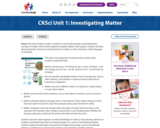
A set of lessons that covers the SEEd standards a set of lessons that covers all of 5.2 (Core Knowledge)
- Subject:
- Professional Learning
- Science
- Material Type:
- Lesson
- Provider:
- Core Knowledge
- Date Added:
- 10/14/2021

A set of lessons that covers the SEEd standards a set of lessons that covers all of 5.2 (Core Knowledge)
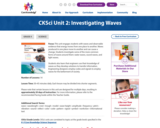
A set of lessons that covers all of UT.SEEd.4.3 (Core Knowledge)

A set of lessons that covers most of 3.2 (Core Knowledge). Teachers would need to add an activity to cover the engineering standard 3.2.6.

A set of lessons that covers UT.SEEd.4.1.3 and UT.SEEd.4.1.UT.SEEd.4. Only do Chapters 9 and 10 (Core Knowledge)
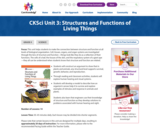
A set of lessons that covers UT.SEEd.4.1.1 and UT.SEEd.4.1.2 (Core Knowledge)

A set of lessons that covers most of 3.1 (Core Knowledge). Teachers would need to add a solution design activity to cover 3.1.3. This unit has students evaluate design solutions, but not design their own.

A set of lessons that covers all of UT.SEEd.4.4- ONLY DO CHAPTER 5 (Core Knowledge)

Online statistical software.

Students create visual artwork combining various images to convey diversity or social justice issues, concerns or themes related to the central text.

Students showcase artwork and nonfiction writing that addresses issues they found in the text. The result is a visual, collaborative and creative representation of student learning and ideas. An alternative to the bulletin board is a community newsletter.

Students create “trading cards” spotlighting diverse community members who work toward social justice goals that connect to themes from the central text.
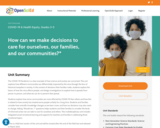
The COVID-19 Pandemic is a clear example of how science and society are connected. This unit explores how different communities are differentially impacted by the virus through the lens of historical inequities in society. In the context of decisions their families make, students explore the basics of how the virus affects people, and design investigations to explore how it spreads from person to person, and what we can do to prevent that spread.
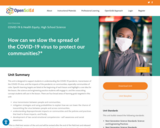
This unit is designed to support students in understanding the COVID-19 pandemic, transmission of the COVID-19 virus, and the impacts of the pandemic on communities, especially communities of color. Specific learning targets are listed at the beginning of each lesson and highlight a core idea for the lesson, the science and engineering practice students will engage in, and the crosscutting concept students will use in the lesson. i

Try out Search Coach and Domains when researching COVID and Mental Health.

Slideshow outlining the Civic Online Reasoning curriculum

This video is an explanation of CRISPR-Cas 9.
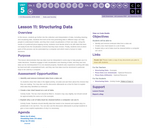
In this lesson, students go further into the collection and interpretation of data, including cleaning and visualizing data. Students first look at the how presenting data in different ways can help people to understand it better, and they then create visualizations of their own data. Using a the results of a preferred pizza topping survey, students must decide what to do with data that does not easily fit into the visualization scheme that they have chosen. Finally, students look at which parts of this process can be automated by a computer and which need a human to make decisions.
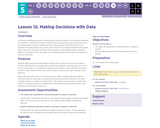
In this lesson students get practice making decisions with data based on some problems designed to be familiar to middle school students. Students work in groups discussing how they would use the data presented to make a decision before the class discusses their final choices. Not all questions have right answers and in some cases students can and should decide that they should collect more data. The lesson concludes with a discussion of how different people could draw different conclusions from the same data, or how collecting different data might have affected the decisions they made.
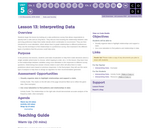
Students begin the lesson by looking at a cake preference survey that allows respondents to specify both a cake and an icing flavor. They discuss how knowing the relationship between cake and icing preference helps them better decide which combination to recommend. They are then introduced to cross tabulation, which allows them to graph relationships to different preferences. They use this technique to find relationships in a preference survey, then brainstorm the different types of problems that this process could help solve.
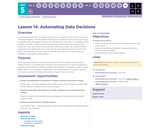
In this lesson students look at a simple example of how a computer could be used to complete the decision making step of the data problem solving process. Students are given the task of creating an algorithm that could suggest a vacation spot. Students then create rules, or an algorithm, that a computer could use to make this decision automatically. Students share their rules and what choices their rules would make with the class data. They then use their rules on data from their classmates to test whether their rules would make the same decision that a person would. The lesson concludes with a discussion about the benefits and drawbacks of using computers to automate the data problem solving process.